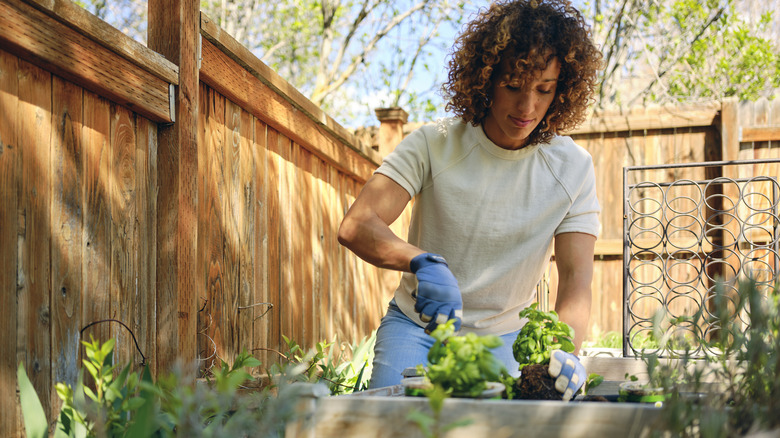How You Can Start Growing Hybrid Plants In Your Own Garden
Growing hybrid plants in your garden is simple and easy — perhaps more so than you might think. The quickest way is to obtain hybrid seeds from a nursery or local retailer, then you plant the seeds like you would any other plant and tend to its individual watering and sun needs. The alternative way would be to create your own hybrid plants yourself. This would require you to cross-pollinate two compatible plants in your garden to produce a new hybrid plant. Once that plant matures, you can harvest the seeds to continue growing them in your garden.
But what are hybrid plants and why are they beneficial? Hybrid plants result from crossbreeding two genetically distinct plant varieties to create offspring with desired traits. Hybridization aims to enhance qualities that may not exist in either parent plant individually, resulting in hybrids that often exhibit improved vigor, uniformity, or productivity. While hybrids offer advantages such as increased crop yield or ornamental appeal, their offspring sometimes do not reliably reproduce the desired traits, leading to the need for continued hybrid seed production. Hybrid plants play a significant role in agriculture, horticulture, and the development of new plant varieties.
How to hybridize plants
Begin by selecting the parent plants — also known as the "female" and "male" plants — making sure you choose varieties that possess the desired traits you wish to combine in the hybrid offspring. To prevent accidental cross-pollination from other plants, isolate the flowers of the selected female parent plant. This can be done by using protective covers such as mesh bags or by physically removing the flowers and placing them in a separate area.
Once you've isolated the female plant, it's time for pollination. Carefully remove the petals from the male plant's flower to expose the stamen, which holds the pollen. Gently transfer the pollen from the stamen to the stigma of the female plant's flower using a small brush or cotton swab. Apply the pollen thoroughly to foster successful fertilization. After pollination, the fertilized flowers will develop into fruits containing the hybrid seeds. Allow the fruits to mature fully on the plant.
Once the fruits ripen, collect them and extract the seeds. Clean the seeds by removing any remaining debris. Label and store the seeds properly to maintain their viability, and when you're ready to plant the hybrid seeds, follow the germination instructions specific to the plant species. Once the seedlings have emerged, carefully observe their growth and development. Look for traits that resemble the desired characteristics of the hybrid offspring, and select the seedlings that exhibit these desired traits for further cultivation.
Hybrid plants for your garden
For gardeners who simply want to buy and grow already curated hybrid plants, consider integrating Knock Out Roses to your garden. The Knock Out Rose is a popular and easy-to-grow hybrid rose variety that has gained immense popularity among gardeners. This hybrid combines the best traits of several rose species, resulting in a plant that is highly disease-resistant and low maintenance. It continuously blooms throughout the growing season, producing clusters of vibrant flowers in shades of red, pink, or yellow, adding elegance and fragrance to your garden. These roses are adaptable to various growing conditions and can thrive in both full sun and partial shade, making them a versatile choice for gardeners of all skill levels.
For the more adventurous or seasoned gardener looking to experiment with the hybridization of their own parent plants, try starting with daylilies. Daylilies are versatile and resilient plants that readily hybridize. By crossbreeding different daylily cultivars, you can experiment with new color combinations, flower shapes, sizes, and patterns. Daylilies are known for their adaptability and the ease with which they can be hybridized, making them an excellent choice for beginners.
Another great plant for gardeners who would like to dip their toes in hybridizing is tomatoes. Tomatoes offer abundant possibilities for hybridization, allowing you to combine traits such as size, shape, flavor, and disease resistance. By cross-pollinating different tomato varieties, you can create hybrids with specific characteristics that meet your desired taste and growing conditions.


